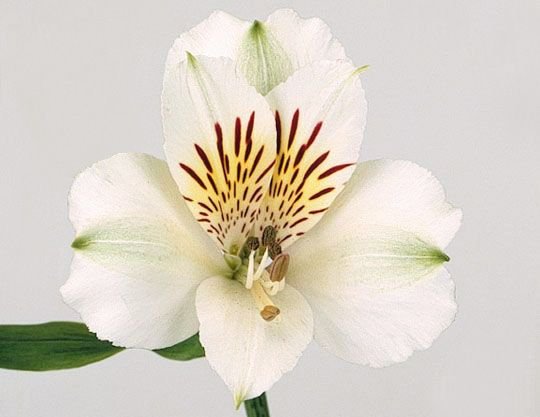Introduction to Alstroemeria
Alstroemeria , frequently known as the Peruvian lily or lily of the Incas, is a dynamic blossoming plant that spellbinds groundskeepers with its vivid sprouts. Local to South America, especially Peru, Chile, and Brazil, Alstroemeria species flourish in USDA solidness zones 6 through 10, where they can deal with different environmental conditions. These plants ordinarily develop to a level of 1 to 3 feet and a length of around 1 to 2 feet in width. Alstromeria blossoms arrive in various varieties, including pink, red, orange, and yellow, with each sprout highlighting striking markings that upgrade its visual allure.
Alstromeria requires well-depleting soil with a pH between 6.0 and 7.0 for ideal development. In a perfect world, the plants favor full sun to halfway shade, getting 4 to 6 hours of direct daylight daily. With legitimate consideration, Alstromeria can sprout from pre-summer to late-summer, giving an enduring sprinkle of variety in gardens and decorative designs.
Alstromeria Planting Made Easy: Soil and Sunlight Tips
Establishing Alstromeria effectively relies on choosing suitable soil and daylight conditions. Start with soil: Alstromeria flourishes in well-depleting soil that is rich in natural matter. A loamy soil with a pH range of 6.0 to 7.0 is excellent. To upgrade waste, blend in fertilizer or matured excrement, further developing soil design and supplement content. Plant Alstroemeria where the dirt has sufficient seepage to forestall root decay.
Alstroemeria plants need 4 to 6 hours of direct sunlight daily for daylight. While they can endure fractional shade, complete sun openness guarantees the best blossom quality and plant wellbeing. In areas with extraordinary summer heat, giving some midday shade can forestall leaf burn. Legitimate soil planning and daylight openness will assist your Alstromeria with prospering, offering energetic blossoms from pre-summer through fall.
Master Alstromeria Planting: Soil and Light Essentials

Shining on soil and light is pivotal to dominating Alstromeria planting. Alstromeria favors well-depleting soil with a pH level somewhere between 6.0 and 7.0. Blend half loamy soil and half natural matter like manure to accomplish this. This mix guarantees sufficient waste and supplement accessibility. Avoid earthy soils, which can hold excessive dampness and lead to root decay.
As far as light, Alstromeria flourishes in full sun to halfway shade. Place your plants where they get 4 to 6 hours of direct daylight daily for ideal development. In more smoking environments, a touch of evening shade can assist with shielding the plants from extreme intensity and forestall leaf consumption. Complying with these dirt and light rules will advance solid development and lively blossoms, improving your nursery’s visual allure.
Grow Stunning Alstromeria: Soil and Light Guidelines
To become shocking, Alstromeria must have exact soil and light rules. Alstromeria thrives in well-depleting soil with a pH level between 6.0 and 7.0. Go for the gold structure of 60% soil and 40% natural matter, like manure, to guarantee fantastic seepage and supplement accessibility. This blend upholds lively root advancement and decreases the chance of waterlogging.
Alstroemeria plants expect 4 to 6 hours of direct daylight daily for light. In the district’s areas of strength for with sun, giving some midday shade can assist with forestalling leaf burn and keep up with plant wellbeing. Reliable daylight supports plentiful blossoming, with sprouts showing up from pre-summer through late-summer. Adhering to these dirt and light rules, you’ll develop solid, dynamic Alstroemeria plants that upgrade your nursery’s excellence and essentialness.
Alstromeria Planting Basics: Choosing the Right Soil and Light

For fruitful Alstromeria planting, choosing suitable soil and light circumstances is crucial. Alstromeria flourishes in well-depleting soil with a pH between 6.0 and 7.0. Ideal soil comprises half topsoil and half natural matter, like fertilizer or matured compost. This mix guarantees legitimate seepage and enhances the dirt with fundamental supplements, advancing vigorous plant development.
Light is similarly significant: Alstromeria expects 4 to 6 hours of direct daylight every day. While the plants can endure fractional shade, complete sun openness yields the best outcomes, encouraging more energetic blossoms and better foliage. In more sizzling environments, providing some midday shade can shield the plants from outrageous intensity and forestall expected harm. Sticking to this dirt and light nuts and bolts will make way for flourishing Alstromeria that carries tone and essentialness to your nursery.
Top Tips for Alstromeria: Perfect Soil and Sunlight Conditions
Sticking to consummate soil and daylight conditions is critical for developing top-quality Alstroemeria. Start with soil: Alstromeria succeeds in well-depleting soil with a pH of 6.0 to 7.0. A suggested blend is 60% loamy soil and 40% natural matter, similar to fertilizer or peat greenery. This blend guarantees brilliant seepage, forestalling waterlogged circumstances that can prompt root decay.
As far as daylight, Alstroemeria plants need 4 to 6 hours of direct sunlight every day. For locales with severe summer heat, giving some midday shade can forestall leaf singe and draw out sprouting. With these dirt and daylight tips, you’ll establish an optimal climate for your Alstroemeria, prompting better plants and more energetic blossoms throughout the developing season.
Alstromeria Success: Key Tips for Soil and Sunlight
Making progress with Alstromeria requires careful consideration of soil and daylight. Alstromeria flourishes in well-depleting soil with a pH between 6.0 and 7.0. For ideal outcomes, utilize a combination of half soil and half natural matter, like fertilizer. This blend provides magnificent waste and fundamental supplements essential for robust root development and dynamic blossoms.
As far as daylight, Alstromeria plants need 4 to 6 hours of direct sunlight everyday. While they can endure in complete shade, complete sun openness is great for advancing the best blossom creation and, by and large, plant wellbeing. In districts with extraordinary intensity, a touch of evening shade can forestall potential intensity stress. Following these critical soil and daylight tips will improve your possibilities of becoming a thriving Alstromeria with enduring variety and magnificence in your nursery.
Achieve Beautiful Alstromeria: Soil and Light Tips You Need
To accomplish wonderful Alstromeria, shining on the suitable soil and light circumstances is vital. Alstromeria fills best in well-depleting soil with a pH scope of 6.0 to 7.0. A suggested soil synthesis is half topsoil blended with half-natural matter, like fertilizer. This blend guarantees significant seepage, decreasing the gamble of root decay and advancing sound development.
Alstroemeria plants expect 4 to 6 hours of direct sunlight daily for ideal light. Even though they can deal with halfway shade, exposure to the complete sun upgrades bloom creation and, in general, plant power. Providing some midday shade can shield the plants from overheating and leaf harm in regions with extraordinary daylight. By sticking to these dirt and light tips, you’ll cultivate a climate that upholds lavish, energetic Alstromeria, guaranteeing a shocking presentation of roses throughout the developing season.
Essential Alstromeria Planting Tips: Soil and Sunlight Guide
To guarantee fruitful Alstromeria planting, center around fundamental soil and daylight conditions. Alstromeria flourishes in well-depleting soil with a pH between 6.0 and 7.0. For the best outcomes, utilize a dirt blend comprising 60% topsoil and 40% natural matter, like manure. This blend gives magnificent seepage and a consistent inventory of supplements essential for robust root development and dynamic blossoms.
As far as daylight, Alstroemeria plants need 4 to 6 hours of direct sunlight every day. While they can adjust to halfway shade, complete sun openness is ideal for augmenting blossom creation and plant wellbeing. In regions with outrageous temperatures, offering midday shade can forestall leaf consumption and stretch. By observing these dirt and daylight rules, you’ll establish an optimal developing climate that upholds the thriving of wonderful, sound Alstroemeria plants.
From Soil to Sunlight: Alstromeria Planting Tips for a Gorgeous Garden
To develop a stunning nursery with Alstromeria, consideration of soil and daylight is fundamental. Alstromeria thrives in well-depleting soil with a pH between 6.0 and 7.0. A suggested soil blend is half topsoil and half natural matter, like manure or peat greenery. This mix guarantees great seepage and gives crucial supplements, decreasing the risk of root illnesses and supporting solid plant development.
For daylight, Alstromeria needs 4 to 6 hours of direct sunlight every day to create its dynamic blossoms. While they can endure fractional shade, complete sun openness is excellent for augmenting sprout quality and,, plant wellbeing. Offering shade during the most sultry piece of the day can forestall heat pressure and leaf harm in areas with extreme daylight. Following these dirt and daylight tips will establish a climate where Alstroemeria can flourish, bringing about a shocking, brilliant nursery show.
Alstroemeria 101: Optimal Soil and Light for Perfect Blooms
For wonderful Alstromeria blossoms, shining on ideal soil and light circumstances is significant. Alstromeria flourishes in soil that is well-depleting and has a pH level between 6.0 and 7.0. The perfect soil blend comprises half topsoil and half natural matter, such as manure, which guarantees appropriate seepage and supplement accessibility. This combination forestalls waterlogging and root decay, which are fundamental for energetic development and bountiful blooming.
Alstroemeria plants need 4 to 6 hours of direct daylight every day. While they can survive in fractional shade, complete sun openness brings about the most energetic blossoms and vital plants ‘ wellbeing. Providing some midday shade can shield the plants from unnecessary intensity and forestall leaf consumption in more smoking environments. Complying with these dirt and light rules will assist you with accomplishing staggering Alstromeria sprouts and a prospering nursery.
Conclusion
Successful establishment of Alstromeria depends on understanding and applying the suitable soil and daylight conditions. For energetic sprouts and sound development, utilize well-depleting soil with a pH between 6.0 and 7.0 in a perfect world, a blend of half topsoil and half natural matter. This guarantees your Alstroemeria plants get the necessary supplements while avoiding issues like root decay.
Moreover, give 4 to 6 hours of direct daylight daily to boost blossoming. However, halfway shade in outrageous intensity can assist with forestalling pressure. These direct tips establish an ideal climate for your Alstroemeria, prompting a nursery brimming with shocking, brilliant blossoms. With legitimate consideration, your Alstroemeria will flourish and, later, carry enduring magnificence and appeal to your outside space.




